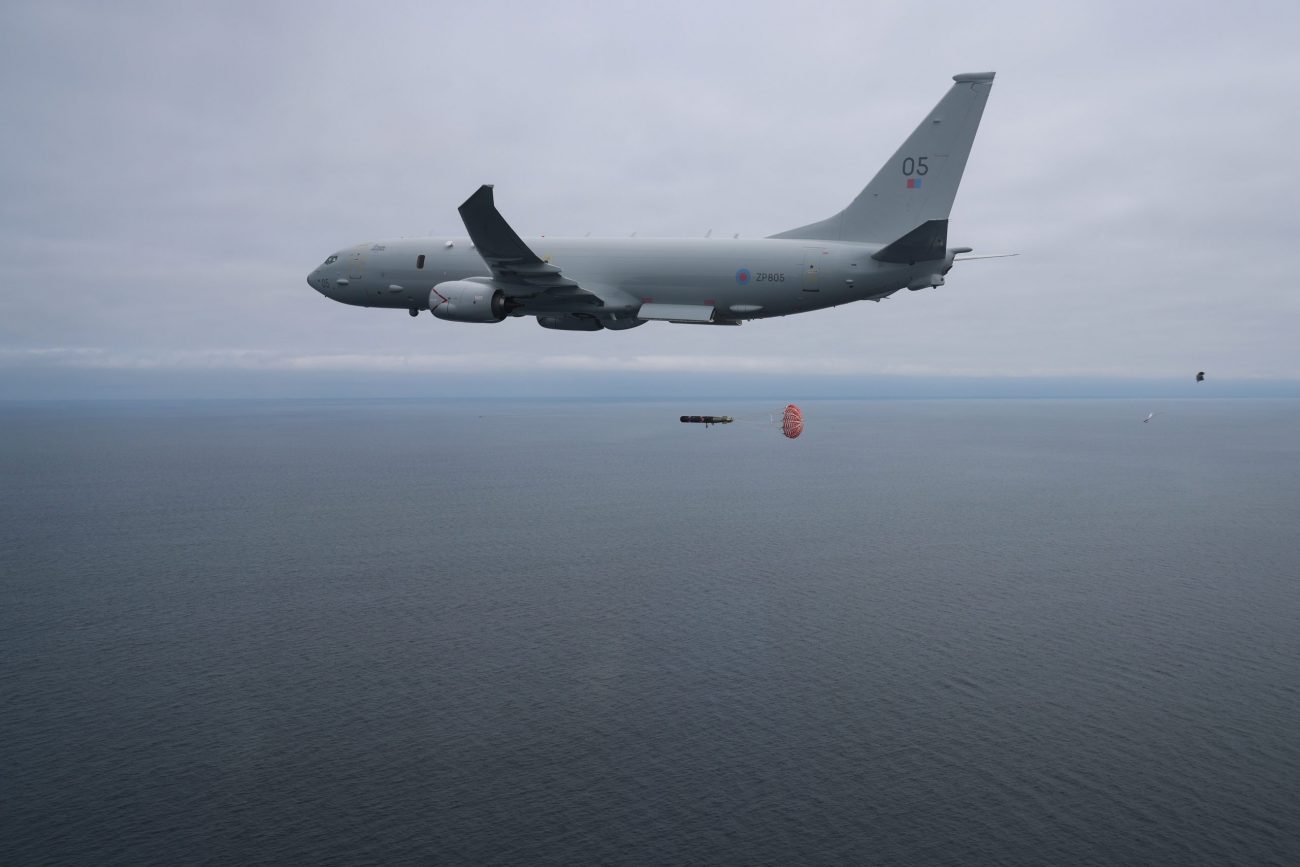On June 5, Australia revealed that a Chinese fighter jet had carried out dangerous maneuvers, threatening the safety of its maritime surveillance P-8A Poseidon while flying over the South China Sea. The J-16 Chinese fighter jet’s interception forced the aircraft to return to its bases.
‘Kamikaze’ Drones Strike Russian Oil Refinery; Suicide UAV Resembles Models For Sale On Chinese Alibaba
However, in an unexpected twist, the Australian media has disclosed that the Royal Australian Air Force (RAAF) had sent a second aircraft that flew from its base just a few hours after the dangerous encounter between the planes of the two sides.
Just hours after the Chinese air force carried out a “dangerous interception” of a RAAF P-8A Poseidon plane, a second Australian military aircraft was sent over disputed waters in the South China Sea in May, ABC News reported.
Both aircraft flew from Clark Air Base in the Philippines.

The report further stated that Australia was steadfast in its refusal to provide any additional information about the incident of May 26. However, flight data obtained by the ABC offered new details on the dramatic flight and other recent Defense Force maritime surveillance missions flown from the Clark Air Base.
Australian Defense Minister Richard Marles had previously disclosed that a Chinese J-16 fighter aircraft intercepted the Australian P-8A Poseidon surveillance aircraft when the latter was undertaking “routine maritime surveillance” activity in the international airspace over the South China Sea.
‘Nuclear Ashes’: Russia’s ‘Satan Missile’ Is Ready For Deployment; Moscow Says Can Wipe Out Entire US East Coast
The Chinese aircraft “flew very close to the side of the [Australian] P-8 maritime surveillance aircraft” and then “released flares,” Defense Minister Richard Marles told reporters.
“At that moment, it then released a bundle of chaff which contained small pieces of aluminum, some of which were ingested into the engine of the P-8 aircraft,” Marles told reporters.

While the Australian government contacted China to complain about the incident, few details were disclosed in the public domain besides the firing of flares by the Chinese aircraft.
The new details disclosed, however, reveal that while the intercepted aircraft did not fly out for over a week, another Poseidon was shortly let off in the same region.
Dangerous Interception
According to Automatic Dependent Surveillance-Broadcast (ADS-B) data accessed by ABC News, the P-8 Poseidon A47-008 of the Royal Australian Air Force was the aircraft intercepted by PLAAF J-16. It took off from Clark Air Base on May 26 at around 11:23 am Canberra time.
The P-8 Poseidon, with the call sign ASY189, was initially monitored as it flew from the Philippines to the South China Sea in a southerly direction before escaping radar coverage. After its “dangerous” run-in with J-16 aircraft, the P-8 Poseidon returned to the Philippines just over three hours later, coming back within the radar range.
The interrupted surveillance mission lasted almost five hours, of which three hours were spent “out of range” in the South China Sea, according to ADS-B data obtained by Canadian researcher Steffan Watkins.
?? The Royal Australian Air Force sent a clear message; they would not be deterred from patrolling the South China Sea, and sent a second P-8A Poseidon into the SCS just hours after the first was "chaffed", and its mission cut short.
— Steffan Watkins (@steffanwatkins) June 22, 2022
Although Beijing says the P-8 “endangered” China’s national security and sovereignty when it “stepped up close-up reconnaissance into the airspace of the Paracel Islands,” a contentious archipelago, the ADS-B data does not explicitly show where the P-8 flew in the South China Sea.
China claims almost the entirety of the South China Sea as its sovereign territory and remains embroiled in territorial disputes with other countries in the region, including the Philippines, from where the RAAF aircraft flew for its mission. Vietnam claims the Paracel Islands besides China and Taiwan.
?? The RAAF redeployed P-8A Posidon A47-008 from Clark Air Base in The Philippines, where they had recently ingested #PLAAF chaff over the South China Sea, to INS Hansa, Goa ?? for exercises with the Indian Navy on 2022-06-06.https://t.co/UUO97mKCLv#7CF9D2 #INSHansa #ClarkAB https://t.co/cNv3Hc1jlf pic.twitter.com/uLxTclxjw1
— Steffan Watkins (@steffanwatkins) June 8, 2022
The P-8 Poseidon A47-008 didn’t execute another surveillance flight until June 2. Still, another aircraft with the number ‘A47-007’ took off the next day towards the South China Sea, a development that the Australian Defense or China did not report.
To assist the Philippine government in its fight against Islamic State, the RAAF has sent two P-8A Poseidon aircraft to Clark Air Base for information gathering operations over the South China Sea. However, the Philippine government is yet to react to the development.
Australian Aircraft In the Philippines
After Australia first revealed the details of the P-8 Poseidon and J-16 aircraft encounter, China issued a strong rebuttal warning Australia to cease dangerous provocations near the Chinese territory.
“On May 26, an Australian maritime surveillance aircraft RAAF P-8 entered China’s airspace near the Xisha archipelago for surveillance activities. It ignored the multiple warnings of the Chinese side and continued approaching the airspace of the Xisha archipelago,” Chinese Defense Ministry spokesman Tan Kefei said in a statement.
The Philippine territory being used as a launch pad to carry out surveillance missions in the South China Sea could complicate the strained relationship between Beijing and Manila. The Clark Base from where the P-8A flew is a former US base in the country.
Further, the US and Australia have a military presence in the Philippines, even though the Philippine Constitution forbids foreign bases. Australia, on its part, has been consistently trying to enhance its presence in the Indo-Pacific to supplement the US and counter-balance China’s power.
According to Manila Times, recent press reports suggest that a military intelligence team from Australia has already established an army advance site within a Philippine military camp in Zamboanga. It could become a primary reason for tension between the two regional occupants.
On its part, China uses a carrot and stick approach with Manila, intimidating it for its territorial assertion on the disputed Spratly Islands while simultaneously strengthening cooperation with it and seeking a closer relationship. China also stated that it was ready to settle the dispute with the Philippines recently in the backdrop of American assistance.
With the ever-growing significance of the region in the current geopolitical environment alongside the escalation in tensions between China and the West, this episode could trigger more chaos and a tighter grip by China on the region.
- Contact the author at sakshi.tiwari9555@gmail.com
- Follow EurAsian Times on Google News





